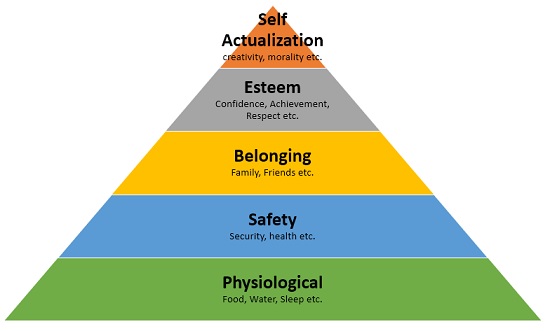In the dynamic world of marketing, understanding consumer needs is the foundation upon which successful strategies are built. At the heart of this lies the concept of “needs” – the fundamental requirements that drive consumer behavior and shape market demand.
As a marketer, grasping the intricacies of needs is crucial to developing products, services, and campaigns that resonate with your target audience.
In this comprehensive guide, we’ll dive deep into the realm of needs in marketing, exploring its definition, importance, types, and the steps to identify them effectively.
What is a Need in Marketing?

A need is a customer’s desire that leads to purchasing a product. When customers purchase products to fulfill needs, it indicates that needs drive customers to make purchases.
A need in marketing refers to a consumer’s fundamental requirement or desire that a product or service can satisfy. It’s an internal state of tension or lack that motivates people to take action and seek solutions. Needs can be physiological, like the need for food, water, or shelter, or they can be psychological, such as the need for belonging, esteem, or self-actualization.
For example, a consumer may need food, but their want may be a specific type of food, such as a burger. Understanding the difference between needs and wants is crucial for marketers in developing products that fulfill the needs and wants of their target audience.
In the context of marketing, needs represent opportunities for businesses to create value by offering products or services that fulfill those requirements. By understanding consumer needs, companies can develop targeted marketing strategies, design better products, and ultimately drive sales and customer loyalty.
Importance of Needs in Marketing

Identifying and addressing consumer needs is crucial for several reasons:
- Product Development: Understanding needs helps businesses create products and services that directly address consumer pain points and desires, increasing the likelihood of success in the market.
- Market Segmentation: Recognizing different consumer needs can help companies segment their target market and tailor their marketing efforts to specific groups, improving the effectiveness of their campaigns.
- Competitive Advantage: Fulfilling unmet or underserved needs can give businesses a significant competitive edge, allowing them to differentiate themselves from competitors and capture a larger market share.
- Customer Loyalty: Consistently meeting consumer needs fosters customer satisfaction and loyalty, leading to repeat business and positive word-of-mouth.
- Innovation: Recognizing emerging or evolving needs can drive innovation, enabling businesses to stay ahead of the curve and introduce new products or services that resonate with consumers.
5 Steps to Find a Need in the Market
Identifying consumer needs is a crucial step in the marketing process, but it can be challenging.
Here are five steps that can help you uncover real needs in the market:
1. Understand the Jobs to Be Done Theory
The Jobs to Be Done theory suggests that people don’t simply buy products or services; they “hire” them to get a specific job done. By understanding the jobs that consumers are trying to accomplish, you can gain insights into their underlying needs and motivations.
For example, people don’t buy a drill because they need a drill; they buy a drill because they need holes in the wall. The job to be done is creating holes, and the drill is the solution they hire to get that job done.
2. Be Introspective
One of the best ways to understand consumer needs is to look inward and reflect on your own experiences. What problems or frustrations do you face in your daily life? What solutions do you wish existed? By tapping into your own needs and desires, you can often uncover potential opportunities in the market.
3. Conduct Interviews
Talking directly to consumers is one of the most effective ways to understand their needs. Conduct in-depth interviews, focus groups, or surveys to gain insights into the challenges, pain points, and aspirations of your target audience. Ask open-ended questions that encourage participants to share their thoughts and experiences freely.
4. Identify and Examine Competitors
Analyzing your competitors can provide valuable insights into the needs they are addressing and the gaps they may be leaving unfulfilled. Study their product offerings, marketing strategies, and customer feedback to identify potential areas of opportunity or unmet needs in the market.
5. Be Ever-Observant
Consumer needs can often be uncovered through careful observation of people’s behaviors, routines, and interactions. Pay attention to how people use products or services, the workarounds they employ, and the frustrations they express. These observations can reveal hidden needs that consumers themselves may not be aware of or able to articulate.
Also try monitor things people don’t say, as this can also provide valuable insights into their needs and preferences. Consider approaching them in person to gather feedback and understand their perspectives.
Types of Needs in Marketing
In marketing, needs can be categorized into different types, each requiring a different approach to address effectively:
Stated Needs
Stated needs are those that consumers explicitly express or articulate.
For example, a consumer might say, “I need a reliable car with good gas mileage.” These needs are relatively straightforward to identify and address through product development and marketing efforts.
Real Needs
Real needs are the underlying motivations or drivers behind a consumer’s stated needs.
In the car example, the real need might be the desire for cost-effective transportation or a sense of independence and freedom. Addressing real needs often requires a deeper understanding of consumer psychology and behavior.
Unstated Needs
Unstated needs are those that consumers may not explicitly express but still expect or desire.
For instance, a consumer buying a new car might expect a certain level of customer service or after-sales support, even if they don’t directly state it as a need. Identifying and addressing unstated needs can help businesses differentiate themselves and exceed customer expectations.
Delight Needs
Delight needs are those that go beyond basic requirements and provide an element of surprise, joy, or excitement for consumers. These needs are often not explicitly stated but can significantly enhance the customer experience and foster brand loyalty.
For example, a car manufacturer might include unexpected features or amenities that delight customers and create a memorable experience.
Secret Needs
Secret needs are the underlying, often subconscious motivations that drive consumer behavior. These needs can be deeply personal or emotional, such as the need for status, belonging, or self-expression. Addressing secret needs requires a deep understanding of consumer psychology and the ability to tap into emotional drivers.
Example of Needs in Marketing
Maslow’s hierarchy of needs provides a framework for understanding the different levels of needs that consumers have.
Let’s explore some examples of brands targeting different levels of needs:
|
Level of Need |
Examples of Brands |
|
Physiological Needs |
Food companies (Nestle, Coca Cola) |
|
Safety Needs |
Insurance companies (USAA, Allstate) |
|
Social Needs |
Social networking sites (Facebook, Twitter, Instagram) |
|
Esteem Needs |
Luxury brands (iPhone, Mercedes, Estee Lauder) |
|
Self-actualization Needs |
Non-Profit organizations and NGOs (UNICEF) |
Let’s consider the smartphone industry to illustrate how needs manifest in marketing:
- Physiological needs: Communication, access to information
- Safety needs: Secure data storage, privacy protection
- Social needs: Social media connectivity, instant messaging
- Esteem needs: Brand prestige, latest features and designs
- Self-actualization needs: Creativity tools, personal productivity apps
Smartphone manufacturers like Apple and Samsung develop products and marketing campaigns that address these multi-layered needs, from the basic requirement of communication to the aspirational desires for status and self-expression
FAQ’s:
What is the Difference Between a Need and a Want?
The difference between a need and a want lies in their essentiality and necessity. A need refers to something essential for survival, such as basic human requirements like shelter, clothes, food, water, etc, which are essential for human beings to survive. On the other hand, a want is a desire for something that is not necessary for survival but is desired by an individual.
How Can Marketers Effectively Identify Consumer Needs?
Marketers can identify consumer needs through various methods, including market research, customer feedback, observational studies, and data analysis. Techniques like surveys, focus groups, and in-depth interviews can provide direct insights into consumer needs, while analyzing consumer behavior, purchasing patterns, and online activities can reveal implicit or unstated needs.
Why is it Important to Understand Consumer Needs?
Understanding consumer needs is crucial for businesses to develop products and services that resonate with their target audience, differentiate themselves from competitors, and foster customer loyalty. By addressing real consumer needs, businesses can create value, drive sales, and establish a competitive advantage in the market.
Can Marketing Create New Needs?
While marketing cannot create entirely new physiological or psychological needs, it can influence consumer perceptions and desires. Through effective marketing strategies, businesses can highlight existing needs that consumers may not have been aware of or create a perceived need for a specific product or service by positioning it as a solution to a problem or desire. This is known as the marketing mix, which includes considerations such as which products to sell and which channels to sell on.
How Do Needs Differ Across Cultures and Demographics?
Needs can vary significantly across different cultures, geographic regions, and demographic groups. Cultural values, societal norms, and economic factors can shape the priorities and perceptions of needs.
For example, the need for status or social acceptance might be more pronounced in certain cultures, while the need for convenience or time-saving solutions might be more prevalent in urban areas or among working professionals.
Conclusion
At VH-info, we understand the critical role that needs play in successful marketing and link building services, White label Link Building Service and SEO for startups for SaaS companies.
By deeply understanding consumer needs – whether stated, real, unstated, delight, or secret – businesses can develop products, services, and marketing strategies that truly resonate with their target audience.
Through our expertise and actionable insights, we empower SaaS brands to uncover the core needs driving consumer behavior, build high-quality content and backlinks that address those needs, and ultimately improve their search engine rankings and online visibility.
Join us on this journey of uncovering and fulfilling consumer needs, and unlock the full potential of your SaaS business.



